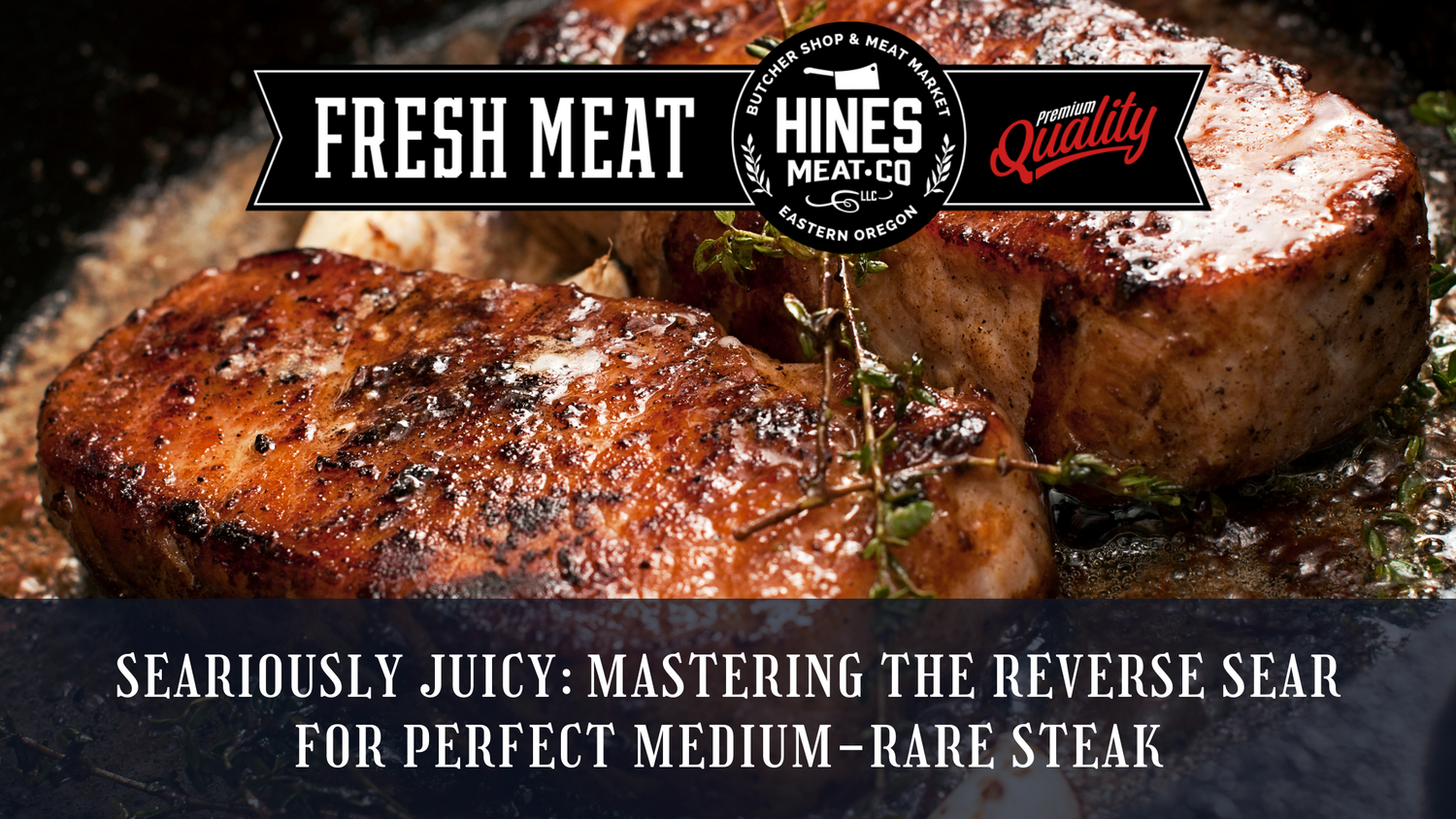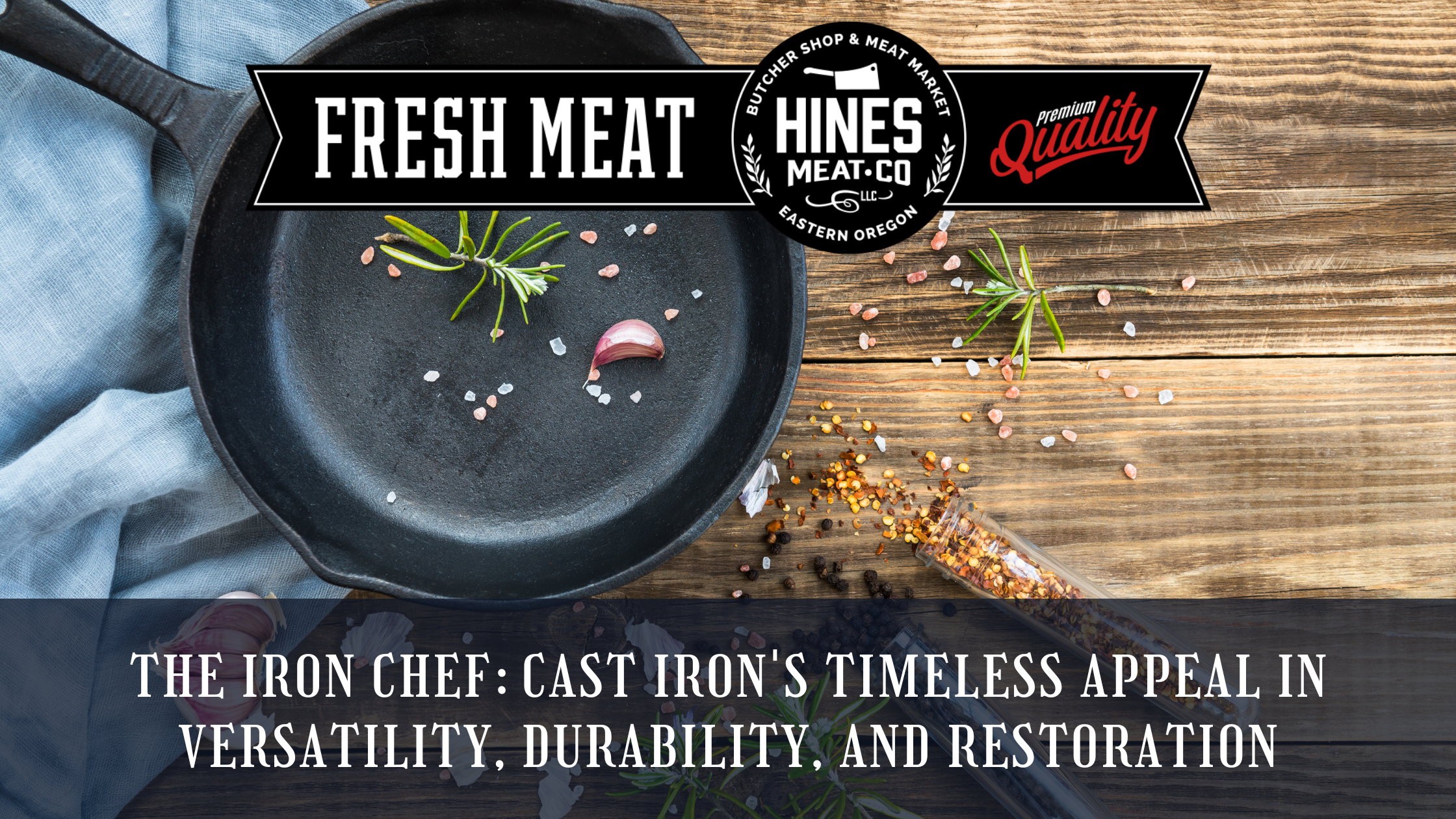A perfectly seared medium rare steak, with its crisp crust and tender, juicy interior, is a culinary delight. Achieving this ideal sear isn't difficult, but it does require some practice and knowledge. One popular method, especially in top steakhouses, is the reverse sear. Here's how it works, why it's effective, and how you can replicate it at home.
Searing vs. Reverse Searing
Traditional searing involves cooking room-temperature meat on a very hot surface for a short time and then finishing it at a lower temperature. This method adds flavor but doesn’t actually lock in moisture.
Reverse searing flips this process: first, cook the meat at a low temperature until nearly done, then sear it on a hot surface like a hot grill, cast iron pan, or griddle. Cook for about a minute or two per side. This method is simple and often results in a more evenly cooked and juicier steak.
Is Reverse Searing Better?
We prefer the reverse sear method because it locks in juiciness and ensures the meat is a perfect medium rare from edge to edge, without the gray, overcooked band around the edges. It creates a tender steak with a great crust that no other method can compete with.
The Science Behind Reverse Sear
Reverse searing stems from the Sous Vide cooking method, which involves cooking meat in a sealed bag in water at low temperatures. This gradual cooking process allows for precise temperature control. Tens of thousands of professional chefs and generations of pit masters learned to sear meat before cooking to lock in moisture and add flavor.
The Maillard Reaction is key to achieving a perfect sear. This chemical reaction between proteins and sugars at high temperatures creates a thermal transfer which makes the delicious, browned crust on the meat. Next moisture must evaporate from the surface being cooked. For this to happen, the surface of the meat needs to reach around 300-350 degrees Fahrenheit. The reaction happens when sugars begin to break down and interact with amino acids. Any number of chemical reactions can occur - each responsible for different levels of aroma and flavor. The seasonings you use also play a huge role in the results of the reaction. This reaction is responsible for the unique flavors of steak, toasted marshmallows, freshly baked bread, and many other things we eat.
Reverse searing takes advantage of science because the process allows chemical and thermal reactions to happen gradually. Bringing the internal temperature of your steak up to the same temperature as the outside cooks the meat at the level of desired doneness all the way through. Cooking steak using the reverse sear method works great whether you are cooking an inch-thick T-bone or a ribeye that’s several inches thick. Searing a thin steak is a sure-fire way to get tough, dry, and overcooked beef.
How to Reverse Sear a Steak
Patience is the main trick to perfecting the reverse sear method because the process takes a bit longer. You can use your preferred method of a smoker, a gas grill on indirect heat, or your oven to cook steak.
Preparation and Equipment
- Thermometer: An accurate meat thermometer is essential. Use a probe for constant monitoring during slow cooking, and an instant-read thermometer for the final sear.
- Seasoning: Apply a dry rub and let the steak rest in the refrigerator for 24 hours.
- Cooking: Use a smoker set to 225 degrees Fahrenheit or a gas grill on indirect heat to slowly cook the steak until it reaches 117-122 degrees Fahrenheit for medium rare. You can use a gas grill by lighting one side and adjusting the temperature to keep a constant low heat. Cook the steak on the indirect heat side.
- Searing: Heat a cast iron skillet or grill to high heat to get the perfect crust. When you hit the ideal internal temperature, place the steaks on the hot surface. Sear the steak for 1-2 minutes per side to achieve a perfect crust. Monitor the temperature with your instant-read thermometer.
- Rest your Steak: Don’t forget to let your steak rest after you’ve seared it. The sear will drive moisture to the outer layer. Resting is just as important for reverse-seared beef as it is for smoked or grilled meat.
Give Reverse Searing a Try
If you haven't tried reverse searing, give it a shot. Understanding the science and technique will help you perfect this method, leading to some of the best steaks you’ll ever cook.



